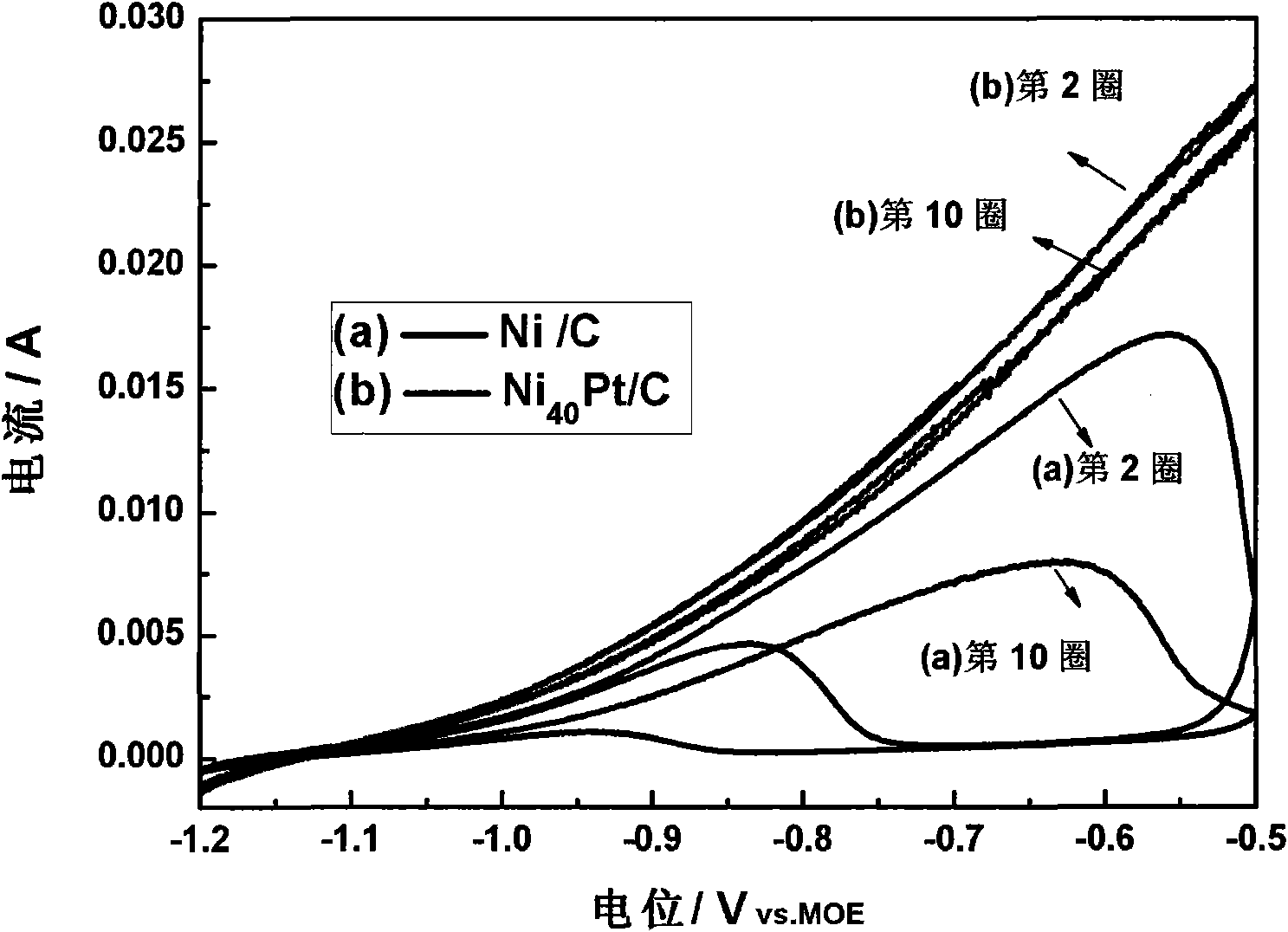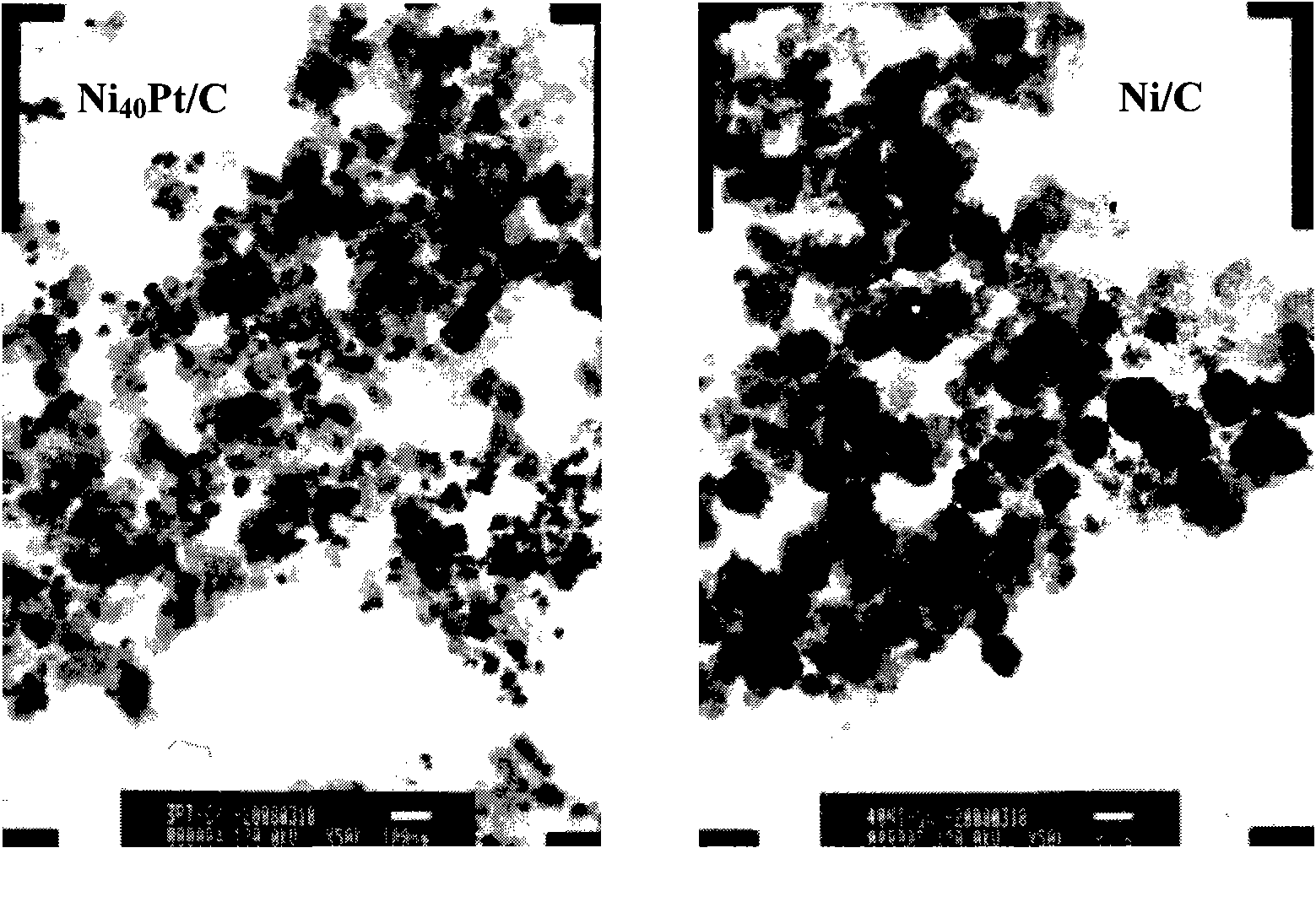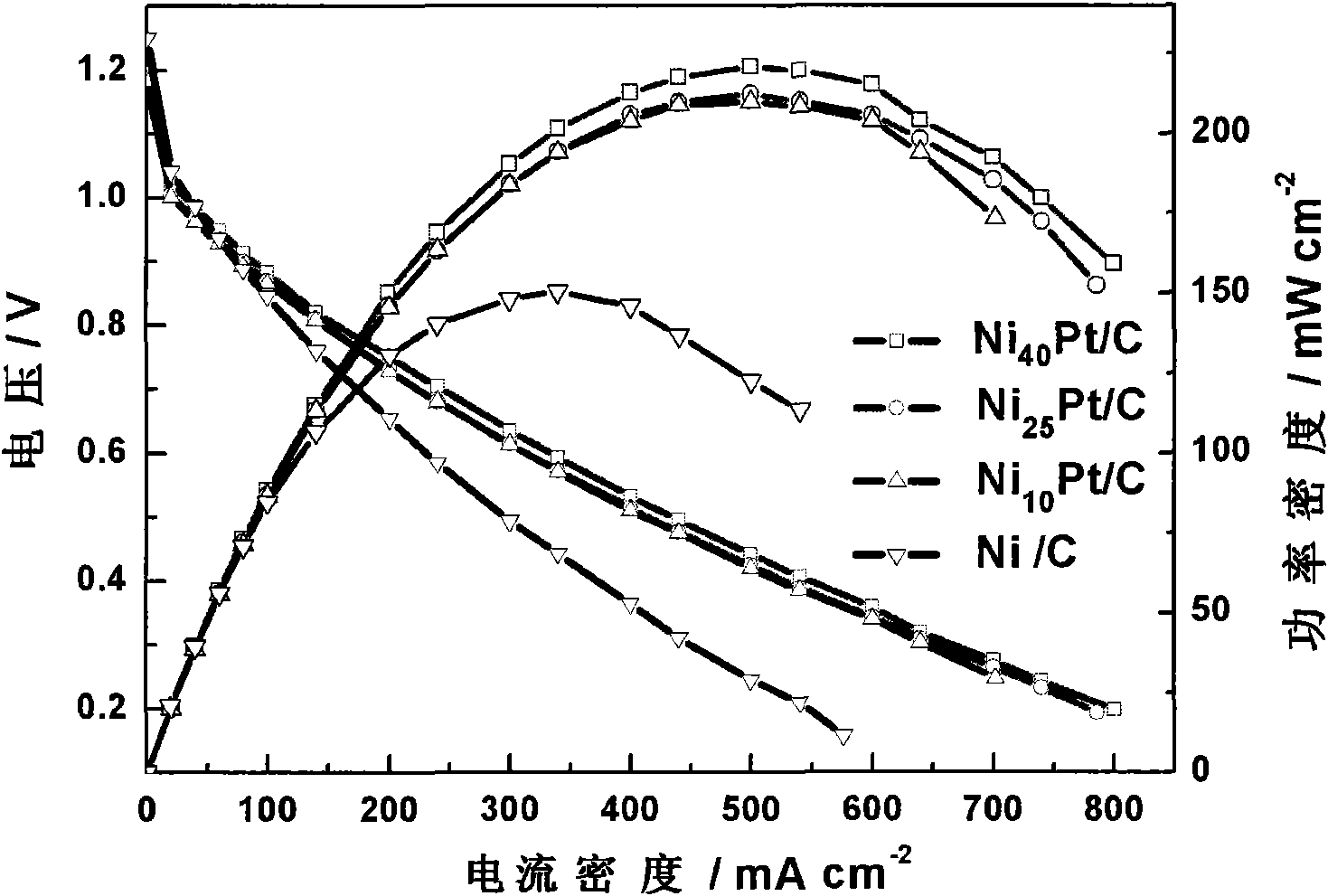Application of Ni-based catalyst in anode of direct borohydride fuel cell
A borohydride and fuel cell technology, which is applied in battery electrodes, physical/chemical process catalysts, metal/metal oxide/metal hydroxide catalysts, etc., can solve the problem of poor stability of Ni/C catalysts and low catalyst mass specific activity , Catalyst loading capacity and other problems, to achieve the effect of improving anti-oxidation ability, low loading capacity and high stability
- Summary
- Abstract
- Description
- Claims
- Application Information
AI Technical Summary
Problems solved by technology
Method used
Image
Examples
Embodiment 1
[0033] Add 60mg of XC-72 carbon powder into 60ml of ethylene glycol solution, and mix evenly by ultrasonic to obtain slurry A; add 0.31ml of ethylene glycol solution of chloroplatinic acid with a concentration of 10mg Pt / ml, and 3.69ml of ethylene glycol solution with a concentration of 10mg Ni / ml of nickel nitrate ethylene glycol solution, and ultrasonically mixed to obtain a mixed solution B; the above slurry A and solution B were mixed, and 2.0M NaOH ethylene glycol solution was added under stirring conditions to pH = 10.5. Place the above mixture in a water bath at 80°C, add 1.2ml of hydrazine hydrate for reduction under stirring, take it out after 2 hours, leave it overnight, wash with water and filter until neutral and free of Cl - , after drying, a Ni with a total metal content of 40% and a nickel-platinum molar ratio of 40:1 was obtained. 40 Pt / C catalyst.
Embodiment 2
[0035] Add 60mg of XC-72 carbon powder into 60ml of ethylene glycol solution, and mix evenly by ultrasonic to obtain slurry A; add 0.47ml of ethylene glycol solution of chloroplatinic acid with a concentration of 10mg Pt / ml, and 3.53ml of a concentration of 10mg Ni / ml of nickel nitrate ethylene glycol solution, and ultrasonically mixed to obtain a mixed solution B; the above slurry A and solution B were mixed, and 2.0M NaOH ethylene glycol solution was added under stirring conditions to pH = 10.5. Place the above mixture in a water bath at 80°C, add 1.2ml of hydrazine hydrate for reduction under stirring, take it out after 2 hours, leave it overnight, wash with water and filter until neutral and free of Cl - , after drying, a Ni with a total metal content of 40% and a nickel-platinum molar ratio of 25:1 was obtained. 25 Pt / C catalyst.
Embodiment 3
[0037] Add 60mg of XC-72 carbon powder into 60ml of ethylene glycol solution, and mix evenly by ultrasonic to obtain slurry A; add 1.0ml of ethylene glycol solution of chloroplatinic acid with a concentration of 10mg Pt / ml, and 3.0ml of a concentration of 10mg Ni / ml nickel nitrate ethylene glycol solution, and ultrasonically mixed to obtain a mixed solution B; the above slurry A was mixed with solution B, and 2.0M NaOH ethanol solution was added under stirring conditions to pH = 10.5. Place the above mixture in a water bath at 80°C, add 1.2ml of hydrazine hydrate for reduction under stirring, take it out after 2 hours, leave it overnight, wash with water and filter until neutral and free of Cl - , after drying, a Ni with a total metal content of 40% and a nickel-platinum molar ratio of 10:1 was obtained. 10 Pt / C catalyst.
PUM
 Login to View More
Login to View More Abstract
Description
Claims
Application Information
 Login to View More
Login to View More - Generate Ideas
- Intellectual Property
- Life Sciences
- Materials
- Tech Scout
- Unparalleled Data Quality
- Higher Quality Content
- 60% Fewer Hallucinations
Browse by: Latest US Patents, China's latest patents, Technical Efficacy Thesaurus, Application Domain, Technology Topic, Popular Technical Reports.
© 2025 PatSnap. All rights reserved.Legal|Privacy policy|Modern Slavery Act Transparency Statement|Sitemap|About US| Contact US: help@patsnap.com



